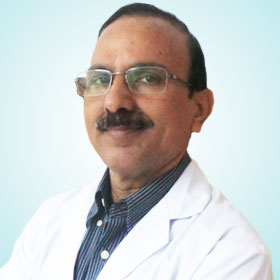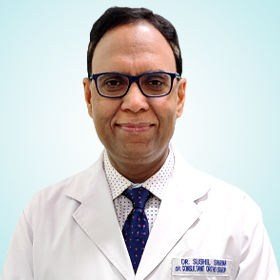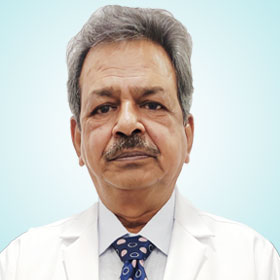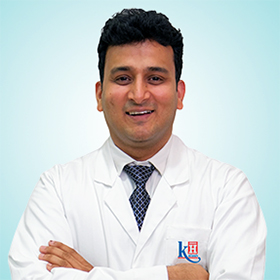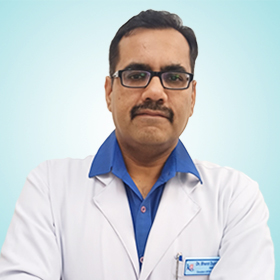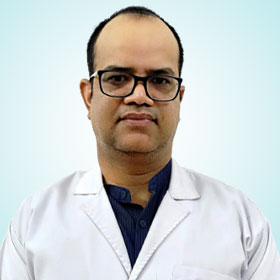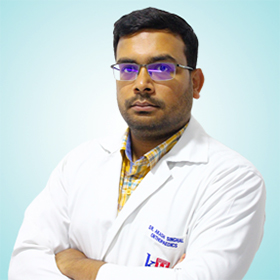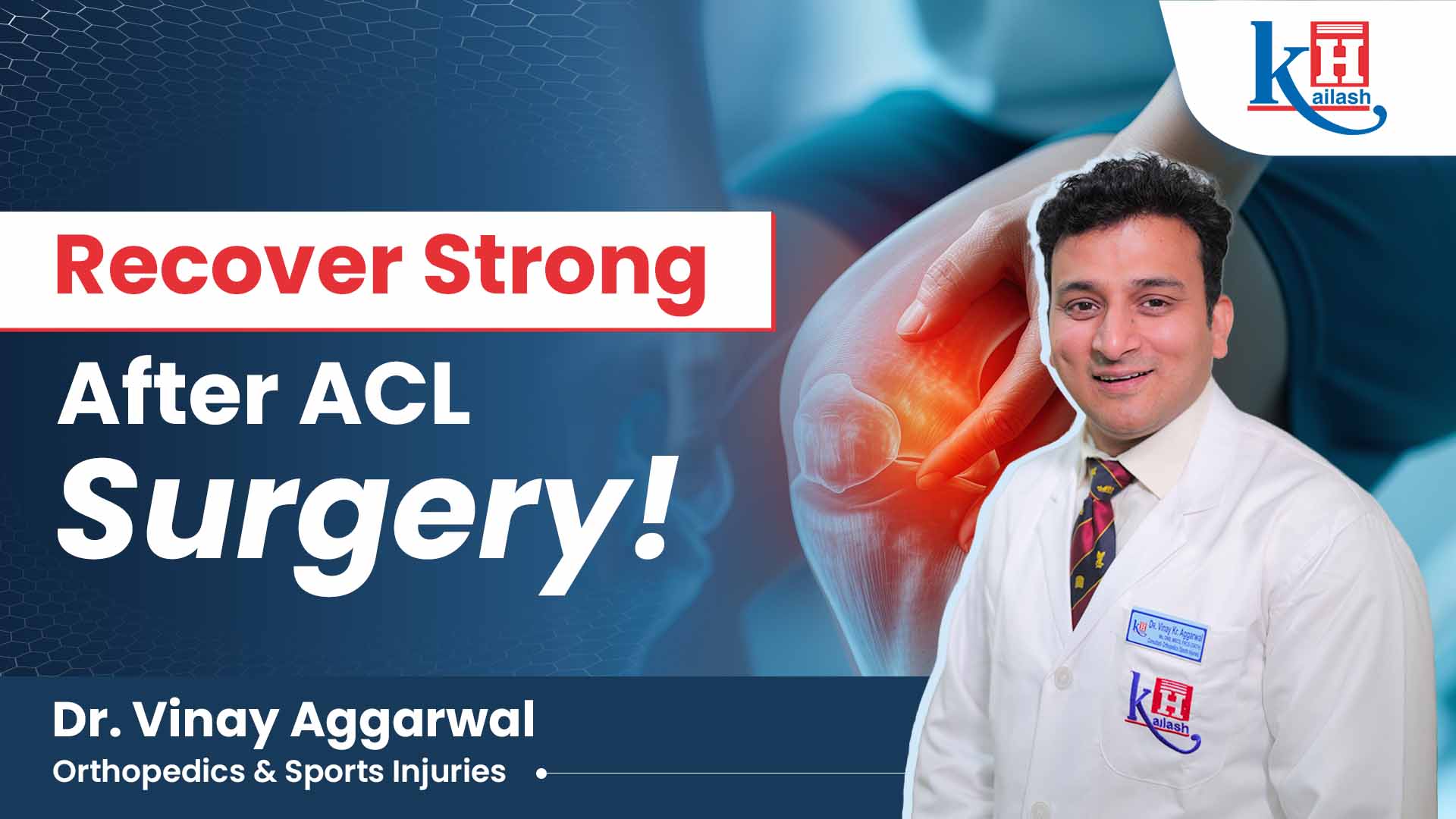List of Top Anterior Cruciate Ligament (ACL) Surgery doctors near by
Talk to our doctors
Anterior Cruciate Ligament (ACL) Surgery

The anterior cruciate ligament (ACL) is a crucial component of the knee joint, providing rotational stability. When a forceful twist or hyperextension injures the ACL, it can lead to significant instability, pain, and difficulty participating in activities. Fortunately, with an ACL tear surgery at Kailash Hospital, you can restore knee stability and function and return to an active lifestyle.
Grafts We Use
A torn ACL cannot be effectively repaired by stitching it back together. ACL tear surgery, also known as ACL reconstruction, involves replacing the damaged ligament with a graft, a piece of tissue used to create a new ligament within the knee. The selection of graft material is influenced by various factors, including the patient's age, anatomy, and activity level. The three common grafts used by our surgeons are:
- Hamstring Tendon: This is the most common graft source, utilizing a tendon from the hamstring muscle group in the leg.
- Patellar Tendon: This graft uses a section of the patellar tendon, located just below the knee cap.
- Peroneus tendon: This graft can be harvested from ankle.
Symptoms of a torn ACL may include:
- Sudden, intense pain in the knee
- Swelling and inflammation
- Feeling of instability
- Difficulty bearing weight
Our Procedure
ACL reconstruction surgery is typically performed arthroscopically, a minimally invasive approach using a small camera inserted into the knee joint. The procedure includes:
- Preoperative Evaluation: This involves a thorough evaluation by our orthopedic surgeons. Our Knee surgeons will discuss your symptoms, medical history, and physical examination. Imaging tests like MRI scans will confirm the ACL tear and assess the surrounding structures.
- Preparation: On the day of surgery, our surgeons will instruct you to avoid eating or drinking for several hours beforehand.
- ACL Reconstruction Surgery: Our surgeons make small incisions around the knee. The arthroscope and surgical instruments are introduced through these small incisions. The surgeons will harvest the graft tissue, prepare the ACL attachment sites on the bones, and position the graft to create a new ligament. The graft is secured with screws or buttons. The entire procedure takes approximately 1 to 2 hours.
Following surgery, our acl orthopedic surgeons will bandage your knee and place it in a brace for stability. Physical therapy is crucial for regaining flexibility, strength and range of motion in the knee.
How long does recovery take after the surgery?
ACL surgery recovery is a gradual process, with significant pain relief often experienced within days. Routine work like attending office within 6 weeks but regaining full function can take months depending on the injury severity and your commitment to rehabilitation. Those who have undergone ACL repair surgery often regain the ability to participate in sports and other activities within 6–12 months.
After the surgery, our doctor will prescribe pain-relief medications. Exercises during the initial 7–10 days will focus on assisting the individual in straightening their leg. Applying ice to the joint regularly can help alleviate swelling and pain.
Our doctor will evaluate your capacity to bear weight on the injured limb and might suggest using crutches or wearing a knee brace. Individuals may resume light activities like walking and climbing stairs before swelling subsides and full strength is restored. Post operation exercises have a big role.
Benefits of ACL Tear Surgery
ACL tear surgery offers a multitude of benefits for anyone experiencing knee instability and dysfunction due to a torn ligament. These advantages include:
- Restored Knee Stability: The primary benefit is regaining stability in the knee joint, preventing excessive laxity (looseness) and reducing the risk of future injuries. This enables confident participation in activities involving pivoting, jumping, and sudden changes in direction.
- Improved Function: ACL reconstruction surgery helps restore normal knee function, allowing you to perform daily activities with greater ease and confidence. This can include walking, climbing stairs, squatting, and participating in sports.
- Reduced Pain: By addressing the underlying cause of instability and pain, ACL surgery significantly reduces knee discomfort, improving overall quality of life.
- Return to Activity: For active individuals, ACL reconstruction surgery is crucial for returning to sports participation. The restored stability and function allow athletes to perform at their pre-injury level with proper rehabilitation.
- Reduced Risk of Osteoarthritis: Early intervention with ACL surgery can help prevent the development of post-traumatic osteoarthritis, a degenerative joint disease that can occur due to chronic knee instability.
What are the possible complications after the surgery?
ACL tear surgery is a safe procedure and the associated complications are rare. Some potential complications of the surgery include -
- Knee stiffness
- Continued knee pain
- Bleeding and blood clots
- Infection
- Instability
Adhering to postoperative rehabilitation ensures a quick return to daily activities.
ACL Reconstruction vs Repair
It's important to distinguish ACL reconstruction from ACL repair. ACL repair involves stitching the torn ends of the original ligament back together. However, this approach is typically not recommended for ACL tears due to lower success rates compared to reconstruction with a graft.
When to consider ACL tear surgery?
You can talk to our orthopedic surgeon about ACL tear surgery, if you're experiencing sudden, intense pain in the knee along with swelling and inflammation. ACL tear surgery is a successful procedure for restoring stability and function in the knee following a ligament tear. By replacing the ACL with a graft and undergoing dedicated physical therapy, you can regain your active lifestyle and return to sports participation.
If you suspect an ACL tear, consult our orthopedic surgeons at Kailash Hospital to discuss the most suitable treatment approach for your specific needs.
FAQ'S
An ACL tear commonly occurs due to sudden stops, changes in direction, or awkward landings during sports activities. It can also result from direct impacts to the knee, such as those experienced in car accidents or falls.
An ACL tear is typically diagnosed through a combination of physical examination, patient history, and imaging tests such as MRI. The Lachman test, pivot shift test, and anterior drawer test are specific maneuvers used by doctors to assess ACL integrity.
Partial ACL tears or those involving less active individuals may sometimes be managed non-surgically with physical therapy and bracing. However, complete tears in active individuals or those experiencing significant instability usually require surgical intervention for optimal recovery.
ACL reconstruction can use autografts (patient’s own tissue) or allografts (donor tissue). Common autografts include hamstring tendon, patellar tendon, and quadriceps tendon. The choice of graft depends on patient factors and surgeon preference.
In the first few weeks after ACL surgery, patients can expect swelling, discomfort, and limited mobility. Crutches are typically used to assist with walking, and physical therapy begins early to promote healing and restore movement.
During the recovery period, patients should avoid activities that place excessive stress on the knee, such as running, jumping, and pivoting movements. High-impact sports should be avoided until the knee is fully healed and cleared by the surgeon.
Preparation for ACL surgery involves pre-operative physical therapy to strengthen the surrounding muscles, cessation of certain medications that may affect healing, arranging post-operative care and support, and following the surgeon's specific pre-surgery instructions for fasting and medication adjustments.
Related Blogs
Patient Reviews & FeedBack
© 2025 Kailash Healthcare Ltd. All Rights Reserved





